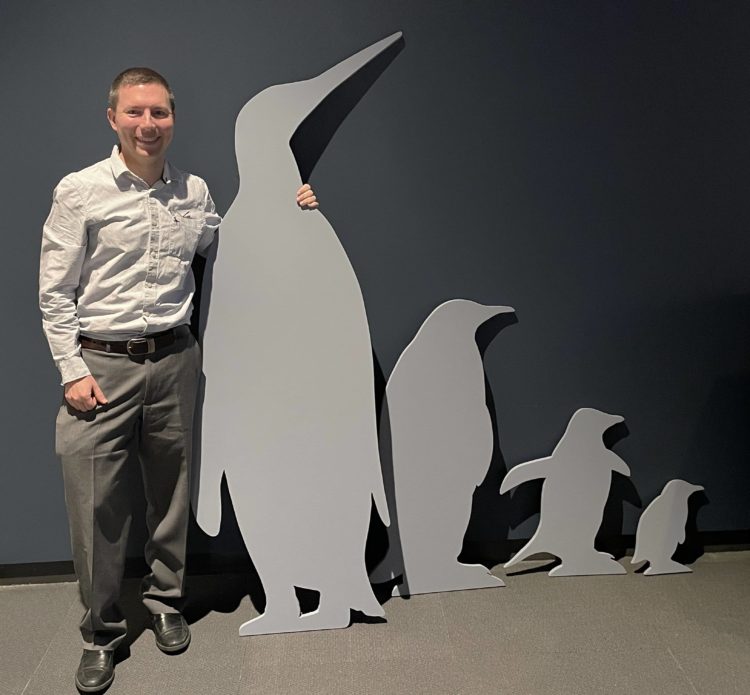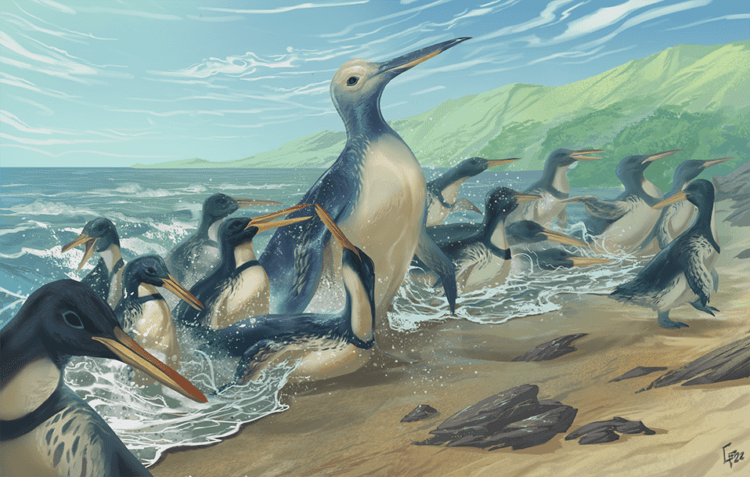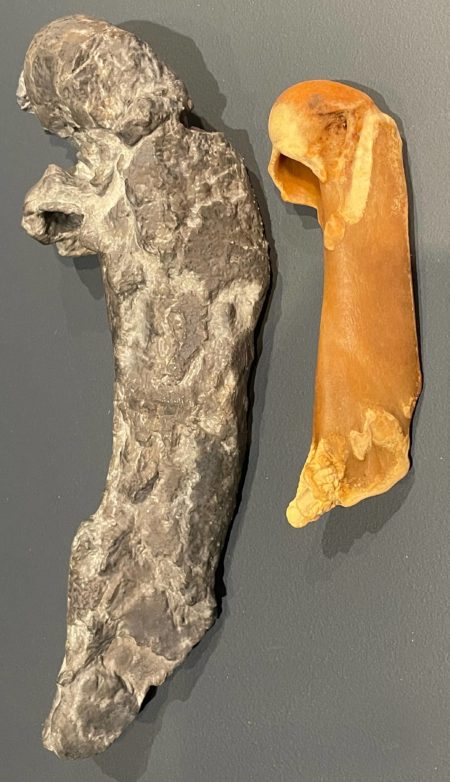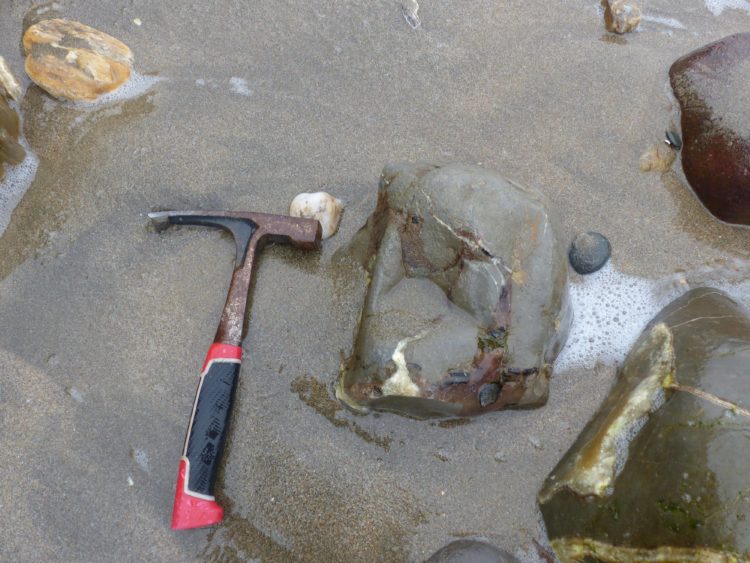Bruce Museum’s Daniel Ksepka Introduces Us to the Biggest Penguin That Ever Lived

By Anne W. Semmes
Dr. Daniel Ksepka is the Bruce Museum’s notable Curator of Science, a paleontologist with a propensity for bringing to light the extraordinary birds that lived on earth millions and millions of years ago. But, of the nearly one dozen extinct bird fossils he has identified perhaps the grandest is the newly discovered supersized penguin, estimated to have stood over five feet tall, weighing in about 340 whopping pounds as it waddled along the New Zealand coastline 60 million years ago.
The story goes, Daniel and his family were on a trip to New Zealand in 2018 and met up with fellow curator and collaborator, Alan Tennyson, at the National Museum of New Zealand Te Papa Tongarewa in the country’s capital of Wellington. The curator shows Daniel the “humongous humerus” bone created from the found fossil by 3-D scans. Daniel then makes his way to the country’s South Island where the fossil was found in rocks on a beach. “The place they were found is Otago, the region around the city of Dunedin – a beautiful place for wildlife.”
After Daniel’s South Island visit, he signs on with Tennyson as an author of the new study on the newly named Kumimanu (a mix of Maori words for monster and bird!) penguin and another smaller found penguin fossil, Petradyptes (rock diver) stonehousei.
Both of these newfound species “plied the waters” off New Zealand Daniel has told “during a sweet spot in oceanic history,” after that asteroid impact ended the dinosaur era and “wiped out most marine reptiles” leaving those ancestors of seals and whales still on land.
Also discovered of these penguins is their primitive flippers of the sort like auks and puffins “that fly and dive.” Daniel has described the new species as “adding evidence that prehistoric penguins became huge before they fine-tuned their flippers into paddle-like appendages.” And, he told, “Heavier seabirds are able to dive deeper and longer than their lighter counterparts.”

Other scientists have weighed in on the new giant penguin, believing the Kumimanu is “close to the upper limit of a flightless seabird,” with no expectations that “substantially larger penguins” will ever be found.
Daniel traces his fascination with studying fossil penguins back nearly 20 years. “I did my dissertation on fossil penguins – penguin evolution in the broader sense – in 2007,” he tells. “I had been studying them a couple years earlier in graduate school, and then I never really stopped because I keep finding more of them every year.” He has worked with Alan Tennyson on a crested penguin fossil “that was much younger, more like three million years that was a really fun project.” Then there was “the youngest extinct penguin that actually died out only about 700 years ago…So, the bones were known from basically scrap piles where people were cooking. We were able to get mitochondrial DNA and figure out that it was a new species split off from other crested penguins about roughly a million years ago. So that was really cool.”
“We’re very comfortable working with each other,” Daniel shares of his good friend Alan Tennyson. “It’s funny because you have these relationships with people, but they’re 12,000 miles away, so you see them twice a decade and it’s always nice. Sometimes, he’ll be here in the U.S., sometimes I’ll be there. But yeah, it was great to just have a chance to catch up. And then he was generous inviting me to work on this jumbo thing that he found.”
Postscript: And this journalist also has the fortune to have a “good friend” in her astronomer stepbrother Michael Snowden who lives in Christchurch on the South Island that she sees only rarely. But he has invited me to New Zealand this week to join him on a two-week cruise expedition to see “The Best of New Zealand,” where I will see just where that “monster” penguin waddled on the beach!






